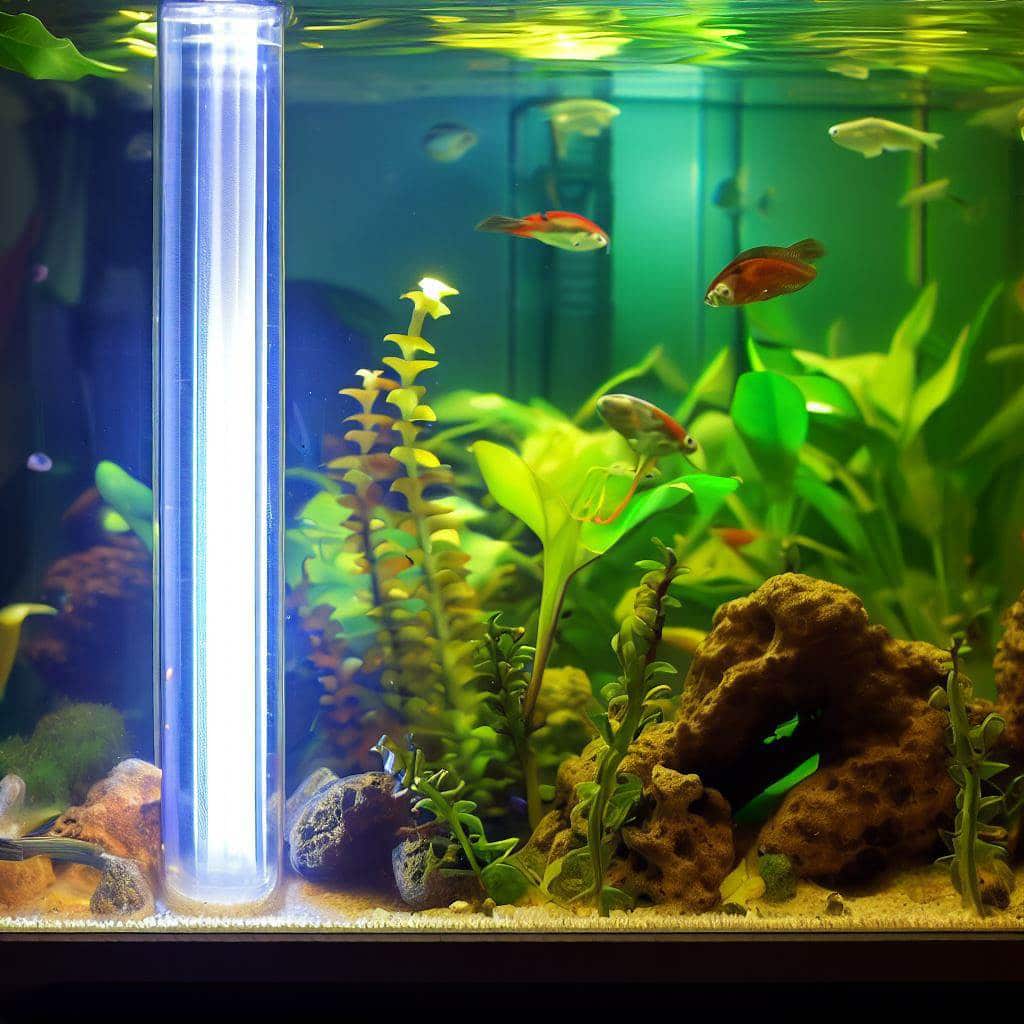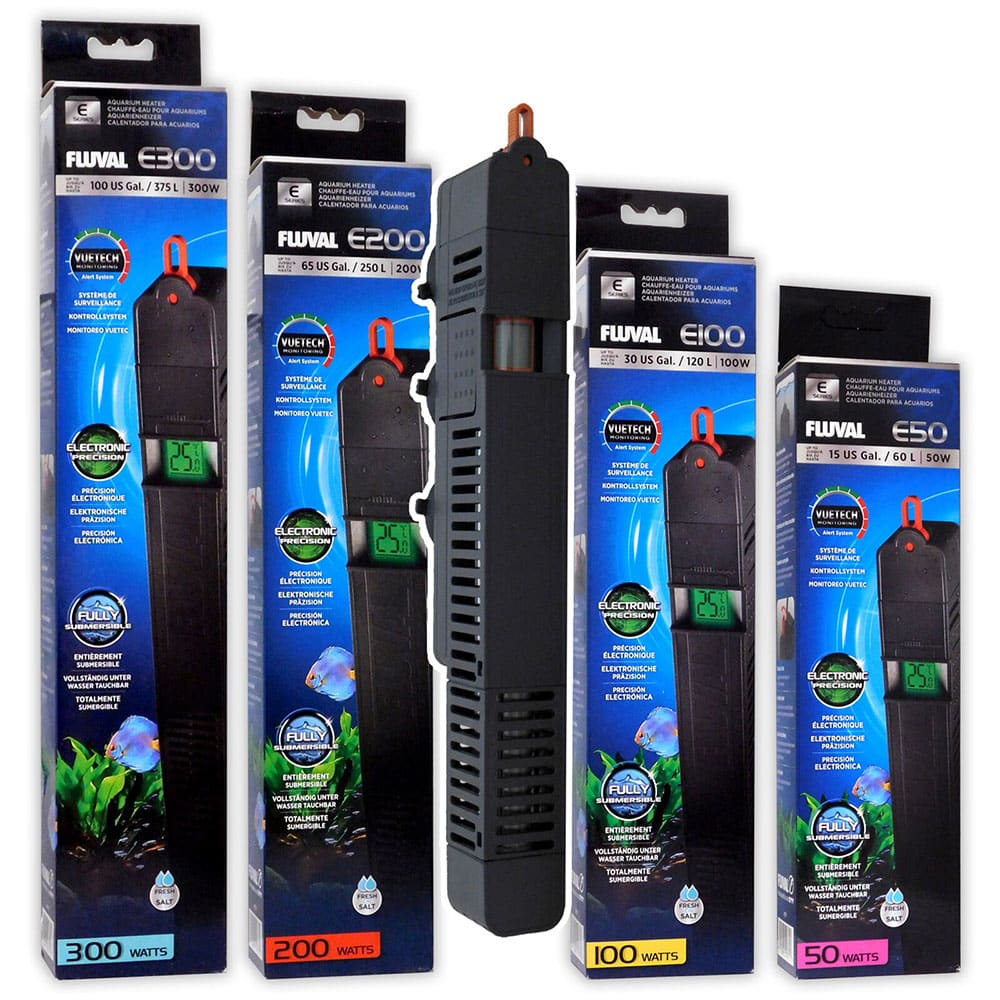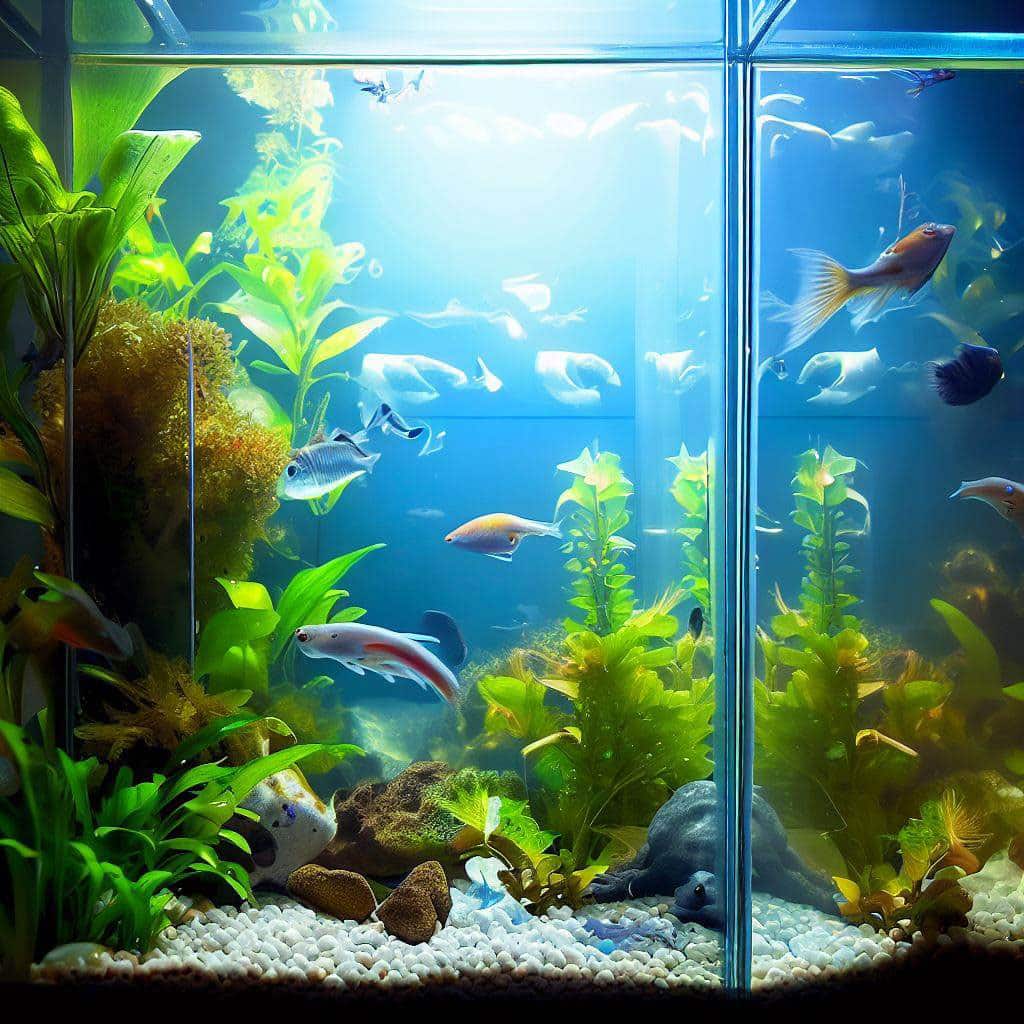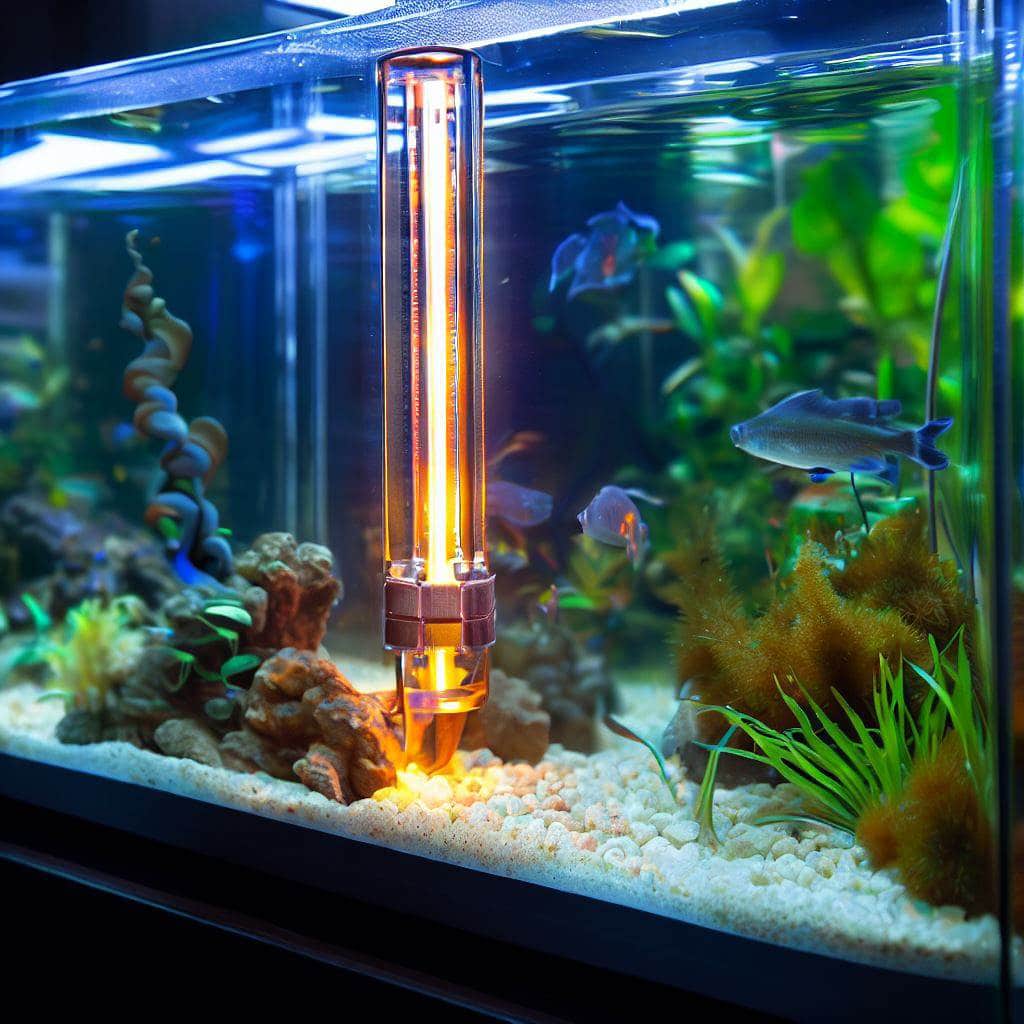What Is The Best Aquarium Heater?
Finding the best aquarium heater not only provides comfort but also ensures the survival and well-being of your underwater companions.
Table of Contents
Introduction
Have you ever dived into the waters during a chilly morning, feeling the jolt of cold against your skin? Imagine if your beloved aquatic pets had to endure unpredictable temperatures every day. Finding the best aquarium heater not only provides comfort but also ensures the survival and well-being of your underwater companions.
Let’s dive into understanding the significance of this critical piece of equipment and the various types available.
Why is the right aquarium heater crucial for your aquatic pets?
Consistent Environment is Key
Fish, unlike humans, are ectothermic, meaning they cannot regulate their internal body temperature. So, they rely heavily on the consistency of their environment to function normally. Sudden fluctuations can stress them out, making them susceptible to illnesses or, in severe cases, can even prove fatal.
Take the Discus fish, for instance. Native to warm Amazonian waters, they thrive at temperatures between 82°F to 86°F. Using the best aquarium heater for your tank ensures they enjoy an environment similar to their natural habitat. If the water gets too cold, even for a short period, their metabolic processes slow down, affecting their growth, color, and overall health.
Breeding and Lifecycles
For hobbyists interested in breeding, temperature plays a pivotal role. For many species, specific temperature cues are needed to initiate breeding behaviors. Having the best aquarium heater for your fish guarantees that you provide the ideal conditions for reproduction, ensuring a new generation of tiny swimmers.
The Barrier Against Diseases
Just as we’re vulnerable to illnesses in extreme weather conditions, fish too, when exposed to inconsistent temperatures, can fall prey to various diseases.
For example, the dreaded ich (white spot disease) is more likely to break out in tanks where the temperature is either too cold or fluctuates frequently. By maintaining a steady temperature with a reliable heater, you’re setting up a primary defense line against such outbreaks.
Brief on types of aquarium heaters available
Submersible Heaters: This is probably the type you’ve encountered most often. As the name suggests, they’re fully submerged in the tank, usually attached with suction cups. They’re effective and easy to install, making them a favorite among many hobbyists.
Inline Heaters: Connected to the aquarium’s filter or sump, these are external units. They heat the water as it flows through, ensuring a consistent temperature. Ideal for those who prefer a more unobstructed tank view.
Undergravel Heaters: These consist of heating cables placed under the substrate. They’re perfect for planted tanks, ensuring the roots get adequate warmth as well.
Filter Heaters: Integrated within the filters, they simultaneously clean and heat the water.
Your aquatic pets’ health, happiness, and vibrant colors are a direct reflection of the environment you provide. Investing in the best aquarium heater for their needs ensures you’re offering them the closest thing to their natural habitat, promoting longevity and vitality.
Just as we need the warmth of our homes, they too deserve the comfort and consistency of a well-heated tank.

What Makes an Aquarium Heater the Best?
Key Features to Consider
Aquarium hobbyists often find themselves in the vast ocean of aquarium products, feeling overwhelmed with the plethora of choices available. If you’re on the hunt for the best aquarium heater, it’s essential to understand that not all heaters are created equal. Several crucial features set the best ones apart from the mediocre.
Dive in with us to explore what makes an aquarium heater truly top-notch.
Accuracy and Consistency
The Heartbeat of Aquatic Life
Consistency is the key to a thriving aquatic ecosystem. Imagine living in a home where the temperature fluctuated unpredictably. It’s unsettling, right? The same goes for our finned friends. Fish are ectothermic creatures, meaning their body temperatures rely on their surroundings. Even minor fluctuations can stress them, leading to a weakened immune system or stunted growth.
For instance, tropical fish like the angelfish thrive at a steady temperature of around 78°F. If the water’s temperature frequently dances above and below this mark due to an inaccurate heater, it could seriously jeopardize the angelfish’s well-being.
The Mark of Precision
The best aquarium heater should not only reach the desired temperature but maintain it with unwavering accuracy. A variance of 1°F to 2°F is typically acceptable. Heaters with high-quality thermostats or digital controls ensure this level of precision, offering peace of mind to the hobbyist.
Durability and Longevity
The Test of Time
Nobody likes the hassle and expense of regularly replacing aquarium equipment. When scouting for the best aquarium heater, durability becomes a paramount factor. A well-constructed heater can weather the elements of its submerged environment, resisting wear and tear and serving your aquarium for years.
Materials Matter
Consider, for example, the difference between glass and titanium heaters. While glass heaters are common and budget-friendly, they can be prone to cracks or breaks, especially in tanks with boisterous inhabitants or during maintenance mishaps. On the other hand, titanium heaters might come with a heftier price tag but boast impressive resistance against damage, ensuring a longer lifespan.
Safety Features
Guarding Against the Unexpected
While it’s vital to provide warmth to your aquatic pets, it’s equally crucial to ensure their safety. A heater malfunction can have disastrous consequences. Overheating can turn your serene tank into a boiling pot, while a shattered heater can release harmful chemicals.
Auto Shut-off Mechanism
The best aquarium heater will incorporate an auto shut-off feature. If the water level drops too low or if the heater is accidentally powered on outside the water (like during water changes), this mechanism will automatically turn the heater off, preventing any mishaps.
Thermal Protection
Another feature of high-end heaters is thermal protection. If the temperature in the tank rises beyond a safe level, either due to external factors or heater malfunction, the device will shut down, safeguarding your pets from dangerous temperature spikes.
Safety Covers
Physical barriers or covers can also be a defining feature. These not only protect the heater from curious or aggressive tank inhabitants but also prevent direct contact, ensuring your pets don’t accidentally get burned.
In the vast sea of aquarium products, zeroing in on the best aquarium heater can feel daunting. However, armed with knowledge about the key features to look for, you can make an informed decision, ensuring the safety, health, and happiness of your aquatic family members.
Remember, the best heaters don’t just warm the water; they create a stable, secure, and thriving environment for all tank inhabitants.
Navigating the Waters: Finding the Best Aquarium Heater for Your Needs
Every aquarium hobbyist understands that maintaining an ideal environment is pivotal for the health and well-being of their aquatic residents. The heart of this environment? The heater. Selecting the best aquarium heater isn’t about opting for the most expensive or the most advanced—it’s about finding the perfect match for your specific needs. Let’s plunge into the depths of the aquarium heating world to discern the ideal heaters for different tanks and requirements.
Best for Large Aquariums
Powerful Consistency
When you’re working with expansive tanks, say 100 gallons or more, the challenge is to ensure even temperature distribution. For these setups, the best aquarium heater would be one that offers high wattage and distributes heat uniformly.
Example: Consider a heater like the Fluval E Electronic Heater. It has a dual temperature sensor and delivers consistent heat, ensuring that the vast expanse of a large tank remains uniformly warm.
Fluval E Electronic Heater: The Champion for Large Aquariums
Navigating the arena of large aquariums demands a heater that can guarantee even heat distribution across vast water volumes. The Fluval E Electronic Heater stands out as the best aquarium heater in this category. Its dual temperature sensors offer a precise reading of the tank’s warmth, ensuring every corner of your expansive habitat stays comfortable. The added LCD allows hobbyists to monitor temperatures at a glance. When considering large aquarium setups, the Fluval E offers both power and precision.
Best for Saltwater Tanks
Withstanding the Salty Challenge
Saltwater can be corrosive, and the equipment used must be resilient. A titanium heater or one designed explicitly for saltwater environments is essential.
Example: AquaTop Titanium Heater with its rust-resistant construction ensures long-lasting performance even in the salty waters of marine tanks.
AquaTop Titanium Heater: Mastery in Saltwater Environments
For those enamored by the allure of marine habitats, the challenge is finding equipment that endures the corrosive nature of saltwater. Here, the AquaTop Titanium Heater shines. Crafted with saltwater resilience in mind, it promises longevity even in challenging marine conditions. Rust-resistance ensures it remains a steadfast component of your marine ecosystem. Every saltwater aquarist seeking the best aquarium heater should consider AquaTop’s durable brilliance.
Best Budget Heater
Economic Yet Efficient
Not all good things come with a hefty price tag. When you’re looking for efficiency on a budget, some heaters deliver without burning a hole in your pocket.
Example: Tetra HT Submersible is a budget-friendly option that doesn’t skimp on quality, ensuring accurate heating for smaller tanks.
Tetra HT Submersible: A Budget-Friendly Gem
The quest for the perfect, cost-effective heating solution leads to the Tetra HT Submersible. While being wallet-friendly, it doesn’t compromise on delivering the optimal warmth that aquatic pets crave. Its easy-to-use interface and dependable heating make it an undisputed favorite among beginners and seasoned hobbyists. If you’re venturing into aquascaping on a budget, this heater promises the best bang for your buck.
Best for Small Tanks or Betta Fish
Gentle and Steady
Bettas and other small tank inhabitants require consistent warmth, but without the risk of overheating. The best aquarium heater for them is compact and offers stable heating.
Example: The Hydor Theo Heater offers adjustable temperature settings in a compact size, making it ideal for small tanks.
Hydor Theo Heater: Tailored for the Petite Paradises
When managing smaller tanks or providing a haven for Betta fish, the Hydor Theo Heater takes center stage. Its compact design is an ideal fit for diminutive tanks, ensuring they get consistent warmth without the risk of overheating. The adjustable settings mean you can fine-tune the conditions, making it a crowning jewel for those passionate about their small-scale aquatic realms.
Most Energy Efficient
Warmth Without the Cost
An energy-efficient heater provides the necessary warmth without skyrocketing your electric bill. Look for heaters with eco-friendly ratings.
Example: Cobalt Aquatics Neo-Therm Heater is known for its energy-efficient performance, ensuring optimal heating with minimal power usage.
Cobalt Aquatics Neo-Therm Heater: Green Efficiency
Energy efficiency is more than a buzzword; it’s an essential attribute for the eco-conscious aquarist. The Cobalt Aquatics Neo-Therm Heater champions this ethos. While ensuring your fish enjoy consistent temperatures, it sips on electricity, ensuring your bills stay low. Its sleek design paired with energy-saving capabilities makes it a frontrunner for anyone scouting the best aquarium heater that’s also eco-friendly.
Best for Tropical Fish Tanks
Mimicking the Tropics
Tropical fish, like tetras or gouramis, thrive in warmer waters. An adjustable heater that can maintain temperatures in the higher range is a must.
Example: EHEIM Jager Aquarium Thermostat Heater lets you set precise temperatures, replicating the warm waters these fish adore.
EHEIM Jager Aquarium Thermostat Heater: Tropics in a Tank
Recreating the balmy waters of the tropics demands a heater that’s both accurate and adjustable. The EHEIM Jager Aquarium Thermostat Heater is engineered for this very purpose. Its precision controls let you replicate those warm tropical conditions with ease. When aiming to give your tropical fish the warmth they’re accustomed to, EHEIM Jager emerges as the unmatched contender.
Best Submersible Heater
Total Immersion
Submersible heaters are wholly placed underwater, ensuring efficient heat transfer. The best aquarium heater in this category would be one that’s durable and offers consistent performance.
Example: Aqueon Pro Adjustable Heater is a submersible model with shatterproof construction, providing both safety and reliability.
Aqueon Pro Adjustable Heater: Submersion Excellence
For many, submersible heaters represent the pinnacle of efficient heat transfer. The Aqueon Pro Adjustable Heater embodies this principle. Its full submersion ensures every watt of power translates into warmth for your aquatic pets. Coupled with its shatterproof design, it stands as a beacon for those seeking the best in-tank heating solution.
Best External Heater
Outside Looking In
External heaters connect outside the tank, usually to the filter. They’re great for hobbyists who prefer an unobstructed view inside their tank.
Example: The Hydor In-Line External Heater heats water as it flows through, ensuring even temperature distribution without being an in-tank obstacle.
Hydor In-Line External Heater: Streamlined Heating
Keeping the aquarium’s interior pristine sometimes means relocating equipment. The Hydor In-Line External Heater caters to this aesthetic, providing heat from outside the tank. By integrating with your filter system, it ensures even heat distribution, all while staying out of sight. It’s the perfect choice for aquarists aiming for an uncluttered tank view.
Best for Nano Tanks
Small but Mighty
Nano tanks, usually under 10 gallons (38 Litres), need heaters that are compact yet effective. Overheating is a real concern in such small volumes of water, so precision is crucial.
Example: The Marina Compact Heater is designed explicitly for nano tanks, offering gentle and consistent heating.
Marina Compact Heater: Mighty Mini
Nano tanks, with their compact charm, need heaters that can function within limited space. The Marina Compact Heater is engineered for such constraints. Despite its size, it packs a punch, ensuring your nano tank remains a warm sanctuary for its residents. When the goal is to find the best aquarium heater for confined spaces, Marina stands tall.
Best Digital Heater
Tech-Savvy Warmth
For those who love precise control and clear digital displays, a digital heater is the way to go. These heaters allow for easy adjustments and often come with advanced safety features.
Example: Finnex Electronic Controller Aquarium Heater boasts a digital display and offers temperature control within 2°F, providing both accuracy and peace of mind.
Finnex Electronic Controller Aquarium Heater: Digital Precision
In the digital age, heaters have evolved to offer unparalleled precision. The Finnex Electronic Controller Aquarium Heater is at the forefront of this revolution. With its clear digital display and razor-sharp temperature adjustments, it’s a tech-savvy aquarist’s dream. When precision and clarity top your list, Finnex is the go-to choice.
Selecting the best aquarium heater involves understanding the unique requirements of your tank and its inhabitants. With the plethora of options available, there’s undoubtedly a heater that’s just right for your aquatic haven. Remember, while the ideal temperature is essential, consistency is key. Your fish will thank you for the warmth and stability that a top-notch heater provides.

Diving Deeper: Key Features to Consider When Buying the Best Aquarium Heater
Using some of the example brands we mentioned previously above, we’ll dissect some quintessential features to consider when making your purchase for an aquarium heater that is right for you.
Temperature Range & Accuracy: The Heartbeat of a Healthy Aquarium
The Goal: Every species has a specific temperature range where they thrive. A heater’s primary job is to reach and sustain those vital degrees.
Why it Matters: Even slight deviations from the recommended temperature range can stress your fish, making them susceptible to illnesses. Ensuring that your chosen heater can not only reach but accurately maintain these temperatures is crucial.
Example: If you house tropical fish that require temperatures between 76°F to 80°F, a heater like the EHEIM Jager Aquarium Thermostat Heater ensures precision within 0.5°F, offering peace of mind and a vibrant aquatic life.
Safety Measures: A Shield Against Unforeseen Mishaps
The Goal: Look for heaters equipped with safety features that prevent any potential disasters, both for the fish and the equipment.
Why it Matters: Overheating can not only harm your fish but also lead to equipment malfunction or damage.
Example: The Fluval E Electronic Heater has a built-in safety system that shuts off the heater when out of water and reactivates it upon return, minimizing risks. When searching for the best aquarium heater, such features elevate a product from just good to exceptional!
Size & Capacity: Perfectly Calibrated Warmth
The Goal: Match the heater’s size and heating capacity to your aquarium’s volume, ensuring efficient and even heat distribution.
Why it Matters: An undersized heater for a large tank will struggle to maintain temperatures, while an oversized heater for a small tank might lead to rapid overheating.
Example: For a 50-gallon (180 Litre) tank, a heater like AquaTop Titanium Heater offers optimal capacity, ensuring your aquatic pets experience consistent warmth.
Wattage: Powering Your Aquatic Comfort
The Goal: Understand the required wattage for your tank size, ensuring you’re neither underpowering nor overpowering your heating system.
Why it Matters: Wattage directly influences how quickly a heater can warm the water. Typically, for every gallon of water (3.78 litres), you’d need around 2.5 to 5 watts.
Example: If you own a 20-gallon (75 Litre) tank, a heater with 50 to 100 watts, such as the Hydor Theo Heater, is a fitting choice. Recognizing the right wattage is a significant step towards acquiring the best aquarium heater for your setup.
Adjustability: Flexibility at Your Fingertips
The Goal: Choose a heater that allows you to effortlessly adjust temperatures, catering to the unique requirements of your fish or changing conditions.
Why it Matters: While some fish are adaptable, others might have specific needs. An adjustable heater ensures that you can make swift changes as necessary.
Example: The Finnex Electronic Controller Aquarium Heater boasts easy-to-use controls, allowing aquarists to switch temperatures within 2°F ranges, catering to those moments when precision matters.
While the quest for the best aquarium heater may seem daunting, understanding these key features simplifies the journey. Remember, the heater you choose plays a pivotal role in crafting a sanctuary for your aquatic residents.
By prioritizing temperature accuracy, safety, size compatibility, appropriate wattage, and adjustability, you’re well on your way to creating a thriving underwater paradise. Your finned friends will undoubtedly thank you for the warmth and stability that a well-chosen heater provides.

The Ultimate Guide to Installing and Using Your Aquarium Heater
So, you’ve just procured the best aquarium heater for your aquatic habitat. Congratulations! But having a top-tier heater is just the start. Proper installation and maintenance can dramatically impact its performance and the overall health of your tank’s residents. Here’s a quick guide to ensure you set up and maintain your heater effectively.
Location and Positioning: A Warm Embrace for the Whole Aquarium
The correct positioning of your heater ensures even heat distribution. Here’s how to get it right:
- Vertical vs. Horizontal: While most heaters come with recommended positioning, as a rule of thumb, vertical placement usually offers better heat dispersion. However, some models, especially for nano tanks, suggest horizontal positioning.
- Avoid “Cold Spots”: Position your heater near a water flow source, like the outlet of a filter or a pump. This ensures heated water is circulated throughout the tank, preventing cold patches.
- Stay Clear: Always ensure the heater isn’t touching the substrate or any decorations, as this can cause uneven heating and even potential damage.
Example: In a 30-gallon (113 litre) tank with a filter output on the right, placing your aquarium heater vertically on the left ensures a circulation loop, distributing warmth evenly.
Calibration and Temperature Setting: The Art of Precision
The perfect temperature is paramount for your aquatic pets’ well-being:
- Initial Calibration: Before immersing your heater, set it to the desired temperature outside the tank. Allow it to acclimatize for 15-30 minutes. This can avoid sudden temperature spikes.
- Monitor & Adjust: Even the best aquarium heaters can deviate slightly. Use a separate, reliable aquarium thermometer to cross-check. If there’s a discrepancy, tweak the heater’s settings accordingly.
Example: For tropical fish requiring 78°F (25.5°C) , set the heater to this temperature initially. After 24 hours, if your separate thermometer reads 76°F (24.4°C), adjust the heater settings slightly upwards.
Regular Maintenance and Cleaning Tips: A Warmth that Lasts
Like all equipment, heaters benefit from routine care:
- Turn Off Before Maintenance: Safety first! Before removing the heater for cleaning, ensure it’s switched off and cooled down.
- Gentle Cleaning: Over time, heaters can accumulate algae and mineral deposits. Using a soft cloth or non-abrasive sponge, gently wipe down the heater during your regular tank cleaning routine. For stubborn deposits, a 50/50 mix of water and white vinegar can be effective. Remember to rinse thoroughly before re-introducing it back into the tank.
- Inspect for Wear: Regularly check for signs of wear or damage, ensuring your prized aquatic residents are always safe.
Example: If you’ve chosen a submersible model of the best aquarium heater available, monthly checks for signs of wear or compromised seals can save future heartaches.
With the right approach, even the most novice aquarist can ensure optimal heater performance. Remember, the secret to a thriving aquatic environment is not just selecting the best aquarium heater, but also mastering its installation and maintenance. Go for it, and dive in with confidence and watch your underwater world flourish!
FAQs: Unveiling Mysteries About the Best Aquarium Heaters
Aquarium heaters remain a pivotal component in creating a thriving underwater ecosystem. However, with their importance comes a flurry of questions. Whether you’re a novice aquarist or someone revisiting the basics, these FAQs about the best aquarium heater will surely guide your way.
1. Why is consistent temperature crucial for my fish?
Consistent temperature is vital for metabolic processes and overall well-being of your fish. Fluctuating temperatures can stress fish, making them vulnerable to diseases. For instance, tropical fish thrive at 76°F to 80°F (24.4°C to 26.6°C). Consistency ensures they remain active, have a healthy appetite, and showcase vibrant colors.
2. How often should I replace my aquarium heater?
While there’s no strict rule, it’s wise to consider replacement every 2-3 years, even if it seems to work perfectly. With time, wear and tear can lead to reduced efficiency or potential malfunctions. Regular checks and choosing the best aquarium heater can often prolong lifespan.
3. What’s the difference between submersible and inline heaters?
Submersible heaters are designed to operate fully immersed in water, typically placed inside the tank. Inline heaters, on the other hand, are installed externally, connected to the aquarium’s filtration system. Water passes through and gets heated before re-entering the tank. Inline heaters are often favored for larger tanks due to their efficiency.
4. Can I use multiple heaters in a large tank?
Absolutely! Using multiple heaters can ensure even heat distribution in larger tanks. For instance, placing heaters at opposite ends can eliminate cold spots, making it an effective strategy in tanks 75 gallons (283 litre) and above. It also adds redundancy; if one fails, the other can prevent a drastic temperature drop.
5. How do I calibrate my heater to ensure accurate temperature readings?
To calibrate, first set the heater to your desired temperature. Use a separate, reliable thermometer to cross-check after 24 hours. If discrepancies arise, adjust the heater’s settings. Regularly monitoring ensures that even the best aquarium heater stays accurate.
6. What wattage is best for my 50-gallon (189 Litre) fish tank?
Typically, you need between 2.5 to 5 watts per gallon. For a 50-gallon tank, aim for a heater between 125 to 250 watts. However, factors like room temperature can influence the choice. If your room is generally cold, leaning towards the higher wattage range can be beneficial.
7. Do I need a heater for a cold-water fish tank?
While cold-water fish, like goldfish, thrive in cooler temperatures, heaters can still be useful. They ensure temperatures don’t drop too low, especially in winter. A heater set to a lower temperature, for instance, 68°F (20°C), ensures consistency even for cold-water species.
8. How can I ensure my heater is safe from water splashes and condensation?
Choose heaters with high water-resistance ratings. Many of the best aquarium heaters are designed to be splash-resistant. However, using a heater guard or placing it in a location where splashes are minimal can further ensure safety. If opting for submersible heaters, ensure they’re properly immersed as per manufacturer guidelines.
9. What should I do if my heater is not working or heating unevenly?
Firstly, check for visible damages or wear. If the heater is old, replacement might be the best option. For uneven heating, ensure the heater isn’t touching the substrate or decorations. Relocating near a water flow source, like a filter’s output, can also aid in even heat distribution.
10. Is there a significant difference between glass and titanium heaters?
Both have their merits. Glass heaters are often more affordable and efficient for small to medium-sized tanks. However, they can be fragile. Titanium heaters, on the other hand, are durable, resistant to corrosion, and great for larger tanks, but may come with a heftier price tag.
Understanding the intricacies of aquarium heaters is vital for every aquarist. By arming yourself with this knowledge, you’re not only ensuring a stable environment for your aquatic pals but also prolonging the life of the best aquarium heater you’ve invested in.
Conclusion: Finding the Best Aquarium Heater for Your Needs
In the vast realm of aquarium care, the minutiae truly matter. Every decision, every purchase, contributes to the delicate symphony of aquatic life. As our exploration concludes, let’s delve once more into the quintessential role of the best aquarium heater and why its selection should never be compromised.
Reiterating the Importance of a Reliable Heater for Your Aquarium’s Ecosystem
An aquarium isn’t just a container of water, but a complex environment where myriad processes intertwine. At the core of these processes lies temperature. A stable temperature, maintained by the best aquarium heater, ensures the health, metabolism, and comfort of your aquatic residents.
Fluctuating temperatures? That’s akin to us living in a house where the climate unpredictably swings from the icy grips of winter to the scorching heat of summer – undoubtedly stressful and detrimental to health.
Remember, it’s not just about preventing the water from turning icy cold or boiling hot; it’s about providing a consistent haven for your fish, invertebrates, and plants. This consistency fosters growth, breeding, and overall vivacity in the underwater realm.
Encouraging Hobbyists to Invest in Quality Over Price for the Health of Their Aquatic Pets
To the untrained eye, the vast array of aquarium heaters on the market might seem perplexingly similar. Some might even be swayed by attractive price tags, sacrificing quality in the process. However, as true guardians of your aquatic family, always prioritize their welfare.
Think of it this way: An investment in the best aquarium heater is an investment in life. While it’s tempting to save a few bucks, the long-term costs of a subpar heater—like disease outbreaks due to stress, replacement of malfunctioning units, or worst of all, loss of your beloved aquatic pets—are infinitely higher.
In the grand tapestry of aquarium care, a heater might seem like a mere thread. But it’s the thread that holds everything together. A quality heater not only promises longevity but the assurance that your underwater haven thrives.
To conclude, the search for the best aquarium heater is a journey, one that underscores your commitment to the aquatic lives you’ve chosen to nurture. As you continue this aquarist adventure, always remember that the well-being of your marine and freshwater companions rests on the choices you make. Choose wisely, and the underwater symphony will play on.






